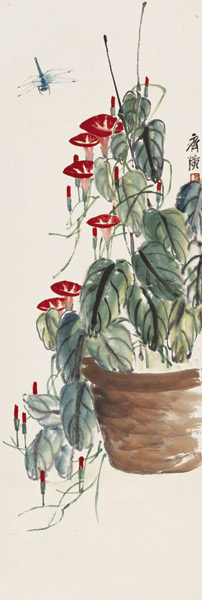 |
|
One of Qi Baishi's paintings on show. [Photo provided to China Daily] |
The words on more than 100 displayed seals at the museum also reflect Qi's introspection of his own life: He started as a carpenter and became a famous artist but kept looking for larger goals, especially as he got older. When many other Chinese artists retreated from social life at an old age, Qi wanted to take on more social responsibilities.
In his painting, Qingping Fulai (prosperity in tranquility), which is a source of the exhibition title, an old man is seen holding a vase, with a fruit bat hovering over him. The vase symbolizes "peace" in Chinese culture and the bat "happiness", following the Mandarin pronunciations of the words.
"That painting reveals he expected a stable and harmonious life," Wu says. "That's a common Chinese person's wish, too."
After World War II had ended, Qi also called for global peace.
"Actually, his art echoes a modernist trend in the world at the time. Yet he expressed it in a typically Chinese way," Wu explains.
The pigeon is another common theme in Qi's art during his later years, showing his wish for world peace, just as Pablo Picasso did. In 1956, the World Peace Council bestowed the International Peace Prize on then-nonagenarian Qi.